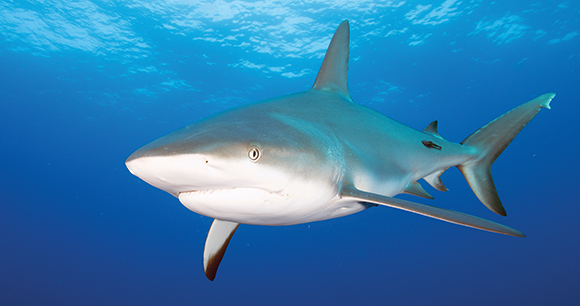Three recent studies highlight the enormous impact that shark fishing and the demand for fins continue to have on global shark populations, as well as the difficulties inherent in efforts to stem illegal trade in fins and protect vulnerable species.

Law enforcement’s ability to identify the species of landed sharks once fins are processed is a particular challenge. Dried or frozen fins can often be identified to species visually. Once processed, however, visual characteristics that allow for species identification are lost. Without genetic testing, it can be impossible to do so.
A study led by Dr. Kai-Lin Selena Shen of Yale-NUS College and the National University of Singapore (Shen et al., Peer J Life & Environment, 2024) examined shark fins acquired from seafood and traditional medicine shops in Singapore. The researchers examined more than 500 specimens and identified 27 species—three of which are categorized as “Critically Endangered,” four as “Endangered,” and 10 as “Vulnerable” on the International Union for Conservation of Nature (IUCN) Red List of Threatened Species. Six species were listed on Appendix II of the Convention on International Trade in Endangered Species of Wild Fauna and Flora (CITES). An Appendix II listing means trade must be regulated “to avoid utilization incompatible with their survival.”
Dr. Diego Cardeñosa of Florida International University and colleagues used genetic techniques to analyze processed shark fins seized in Colombia (Cardeñosa
et al., Animal Conservation, 2023). All five of the species identified are listed on CITES Appendix II, including four that are considered threatened (i.e., categorized as Critically Endangered, Endangered, or Vulnerable on the IUCN Red List). The authors conclude that early-supply-chain processing of shark fins significantly complicates enforcement actions. They recommend the use of in-port genetic testing to facilitate enforcement, particularly in regions where shark products are frequently traded.
Finally, a study led by Dr. Boris Worm of Dalhousie University (Worm et al., Science, 2024) estimates that total annual shark mortality increased from over 76 million in 2012 to over 80 million in 2017, averaging 79 million from 2017 to 2019, including 25 million sharks from threatened species. Ninety-five percent of the catch between 2017 and 2019 occurred in coastal waters. When the authors factored in shark mortality from catch that nations report only as “Elasmobranchii”—a subclass that includes sharks, rays, skates, and sawfish—the number of sharks estimated killed in 2019 increased to 101 million.
Worm et al. compiled data on hundreds of millions of shark deaths and found that, while mortality decreased by 7 percent in pelagic (open ocean) fisheries—most notably in the Atlantic and Western Pacific—it increased by 4 percent in coastal waters. Based on their data and on interviews with shark scientists and fishers, the authors concluded that shark finning bans, which result in sharks being landed whole, may actually increase shark killing by expanding or creating new markets for shark meat and other products. Conversely, regional shark fishing or retention bans had some success in reducing mortality. Their analysis underscores the need for broadscale shark protections such as fishing bans, sanctuaries and no-take protected areas, and catch limits on imperiled species to protect these important marine predators.